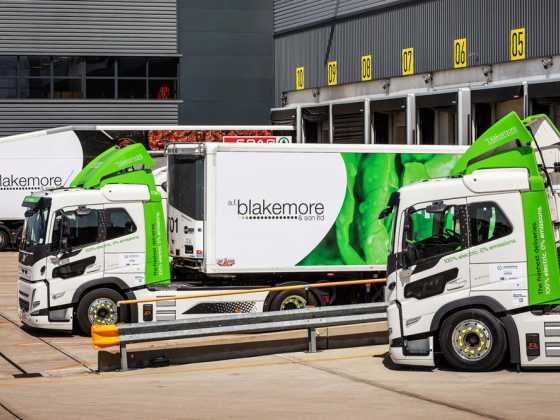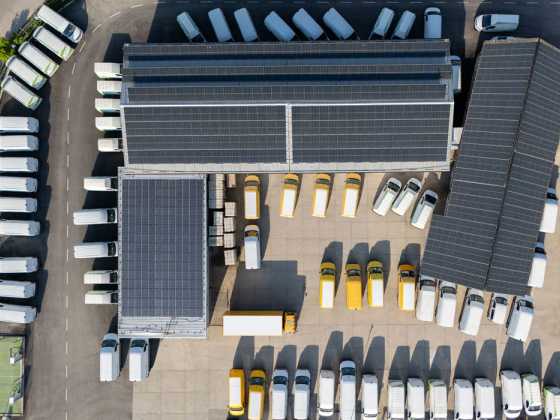The barriers in front of SME fleet electrification

Small businesses make up over 99 per cent of the UK business population, and account for a significant number of vehicles on UK roads – from builders’ vans and couriers’ lorries, to mobile hairdressers’ cars and pizza delivery scooters.
With the 2035 deadline for stopping sales of new internal combustion engine vehicles still some way off but getting closer every day, it’s worth looking at the barriers small firms face when considering moving to zero emissions vehicles (ZEVs) – as well as the schemes and incentives to help them phase out petrol and diesel vehicles.
When we at the Federation of Small Businesses (FSB) asked small firms what the main barriers to ZEV adoption were in 2021, the cost of ZEVs was unsurprisingly the top factor, cited by 46 per cent of small firms. Cost was followed by the lack of infrastructure to support EVs, such as charging points, which was cited by 35 per cent of all small businesses, but rising to 43 per cent of small firms based in rural areas.
The next concern was there not being enough options for electric or hydrogen heavy or light goods vehicles (27 per cent), followed by the lack of a second-hand market for ZEVs (16 per cent). The refusal by landlords to allow charging points to be installed was also a worry, at four per cent.
With our research finding that only one in ten small firms (nine per cent) will have made the switch to ZEVs by 2030, it’s clear the pace of uptake is not as swift as it needs to be in order for the 2035 goal to be reached – something the new government will need to look at post-election, to make sure we don’t drift off course.
Small business owners are, by necessity and as a rule, a canny bunch, and consider carefully before making any spending decisions. The majority believe the planet is facing a climate crisis, and many small firms are deeply committed to reducing their carbon footprint and operating in as energy-efficient a way as possible, but no small business can keep going if the sums don’t add up.
The economic argument for ZEVs will have to make sense before a majority of business owners will switch their company car or goods vehicle to one which runs from a plug rather than a pump.
For small businesses, the lower running costs of electric vehicles make them much more attractive as a potential choice. One in three small firms (32 per cent) cited fuel as a driver of business cost changes in Q1 2024 compared with the same quarter the previous year, so the possibility of moving to zero-emission vehicles holds obvious appeal.
Benefit in kind tax benefits also give a distinct advantage to electric cars, with just two per cent of an electric car’s value taxable, compared with up to 37 per cent for more-polluting kinds of cars. This two per cent rate is fixed until the end of this tax year, in April 2025, and it will rise by one per cent every year thereafter until 2027/28, when it will be five per cent.
Zero-emission vehicle drivers also currently avoid the Congestion Charge and ULEZ charge in London, the Clean Air Zone charges in seven English cities, and can freely access the Low Emission Zones in four Scottish cities. Other cities in the UK may also look at whether or not to bring in similar schemes in future.
The higher upfront costs of ZEVs are a barrier to adoption by small businesses, although one that ought to decrease with time as more models enter the market. Concerns around the lack of a developed secondary market for ZEVs will also dwindle with time, and can be avoided in the present time by leasing rather than buying outright, so that the finance provider rather than the business customer is responsible for any decline in the electric vehicle’s value.
ZEVs have fewer moving parts than internal combustion engines, so tend to break down less frequently. However, when they do so, repairs may be more complicated and take longer to fix, which is something potential buyers should be aware of so they can make contingency plans.
Mythbusting
Back in February, the House of Lords Climate Change Committee called on the government to do more to fight back against ‘myths’ around electric vehicles, with media reports on the supposed drawbacks of ZEVs risking poisoning public opinion by over-emphasising isolated incidents. The government published guidance on owning and running an electric vehicle in the UK, but articles which take a sceptical or even hostile line on ZEVs are still relatively commonplace.
The risk of battery fires in electric vehicles is one perceived drawback which may be overstated in the public’s mind due to broad coverage of a small number of incidents. While battery fires do occur, they are rare, and vehicles with an internal combustion engine are much likelier to catch fire – a study from Australia found that there was a 0.0012 per cent chance of an electric vehicle battery catching fire, while the equivalent for a conventionally-fuelled vehicle was 0.1 per cent, over 80 times higher.
When battery fires do occur, they tend to burn hotter than other types of vehicle fire, but as more ZEVs take to the roads, firefighting techniques will evolve to adapt to differences in vehicle fire types.
‘Range anxiety’ is another commonly-cited concern around ZEVs, linked to worries about the charging network. Technological developments will help this concern reduce over time, as will ongoing investments in charging points and more rapid forms of charging, but even with technology and charging infrastructure in its current state, many small businesses would not encounter insurmountable problems were they to make the change to ZEVs tomorrow. For example, according to data from the Department for Transport, in 2019-20 around half of vans stayed within 15 miles of their base on a typical day – a pattern of usage which could easily work with a ZEV.
The data show that van mileage averages around 13,000 miles a year, which equates to just over 50 miles per working day, which is well within the range of a light ZEV. A typical commute to work by car of under 25 miles as a round trip would also be well-suited to an electric car.
Support
The next government will have a large part to play in helping small firms make the switch from a petrol or diesel vehicle to a ZEV, through the choices it makes around how ZEVs are taxed or what incentives there are to switch to an electric rather than a diesel or petrol car, van, lorry – or moped.
There is a cloud on the horizon, as some current support schemes are set to end in 2025, including the Workplace Charging Scheme to help businesses set up charging points at workplaces, and the plug-in grant scheme, which reduces the upfront cost of electric vans and lorries. FSB would like the next government to provide clarity around the future of these schemes, to give small firms more certainty around their buying decisions, with extensions our preferred outcome.
VAT also complicates the picture. If electric vehicles are charged from a domestic dwelling, the electricity attracts VAT of only five per cent, but vehicles charged on business premises or at public charge points pay the full 20 per cent VAT rate.
However, how VAT is claimed is affected by whether the claimant is a sole trader, a director, or an employee. A sole trader can claim back VAT on charging at a public charging point or at home, but for a director or employee it must be charged on the business premises to claim. To further complicate matters, if the vehicle is used for a mix of business and personal reasons, business owners will have to work out the split between different use types, and claim back VAT only for business usage.
Small business owners, by and large, want to do the right thing – for the planet as well as for themselves – and ensuring they have the right support in place will be a key part of the transition from fossil fuels to electric-powered vehicles.






